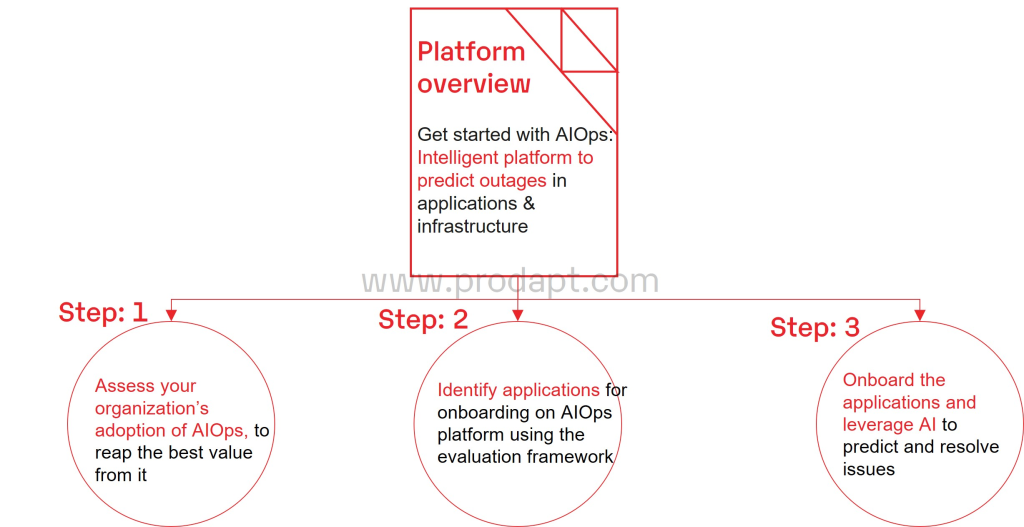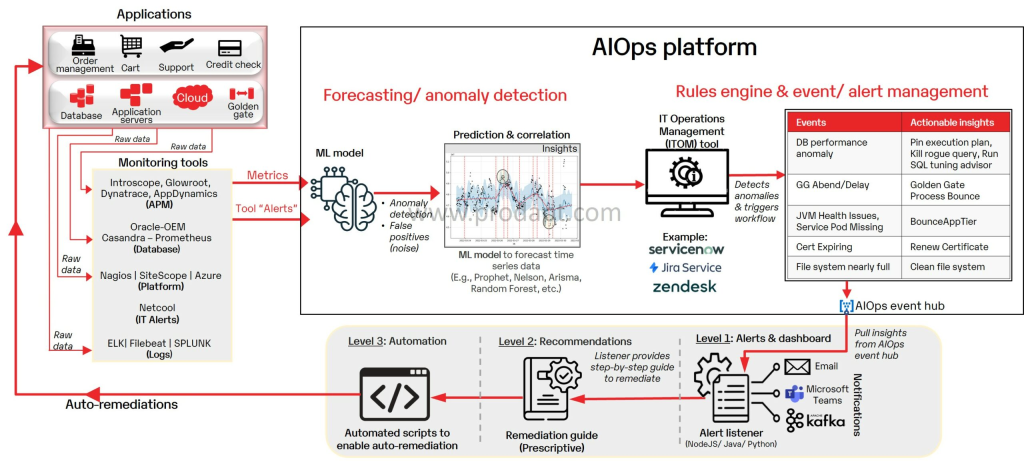Upgrade & Secure Your Future with DevOps, SRE, DevSecOps, MLOps!
We spend hours scrolling social media and waste money on things we forget, but won’t spend 30 minutes a day earning certifications that can change our lives.
Master in DevOps, SRE, DevSecOps & MLOps by DevOps School!
Learn from Guru Rajesh Kumar and double your salary in just one year.

Artificial Intelligence for IT Operations (AIOPS) is a game-changer in the world of IT management. It is a combination of artificial intelligence and machine learning that automates IT operations tasks and enables IT teams to work smarter and more efficiently. In this article, we will explore the top AIOPS features that can help IT teams streamline their operations, reduce downtime, and improve overall performance.
Predictive Analytics
One of the most significant benefits of AIOPS is its ability to predict and prevent issues before they occur. AIOPS uses machine learning algorithms to analyze historical data and identify patterns that could lead to potential issues. IT teams can use this information to proactively address potential issues before they occur, avoiding costly downtime and maintenance.
Anomaly Detection
AIOPS can detect anomalies in real-time and alert IT teams of potential issues before they escalate. The system continuously monitors data from various sources, including servers, applications, and networks, and identifies anomalies based on pre-defined thresholds. This feature enables IT teams to take corrective action before the issue causes significant damage.
Automated Remediation
AIOPS can automate the remediation process by using machine learning algorithms to identify the root cause of the issue and suggest the best course of action. IT teams can set up automated workflows to address issues without human intervention, saving time and reducing the risk of errors.
Data Collection and Correlation
AIOPS can collect and correlate data from various sources, including logs, metrics, and events, to provide a complete view of the IT environment. IT teams can use this information to identify potential issues, troubleshoot problems, and optimize performance.
Real-time Monitoring
AIOPS provides real-time monitoring of the IT environment, enabling IT teams to detect and resolve issues quickly. The system can monitor multiple sources, including servers, applications, and networks, and provide real-time alerts when an issue occurs.
Root Cause Analysis
AIOPS can identify the root cause of an issue by analyzing data from various sources. The system uses machine learning algorithms to correlate data and identify the underlying cause of the problem. IT teams can use this information to take corrective action and prevent similar issues in the future.
Performance Optimization
AIOPS can optimize performance by identifying bottlenecks and recommending changes to improve efficiency. The system can analyze data from various sources, including servers, applications, and networks, and provide recommendations to optimize performance.
Integration with Other Tools

AIOPS can integrate with other IT management tools, including service desk, ITSM, and monitoring tools. The integration enables IT teams to access all the information they need from a single dashboard, streamlining operations and improving efficiency.
Natural Language Processing
AIOPS can use natural language processing to understand and interpret human language. The system can analyze text-based data, such as chat logs and emails, and identify key phrases and themes. IT teams can use this information to improve customer support and identify potential issues.
Cognitive Automation
AIOPS can automate repetitive tasks, freeing up IT teams to focus on more strategic initiatives. The system uses machine learning algorithms to identify and automate tasks that do not require human intervention, such as ticket routing and password resets.
In conclusion, AIOPS has revolutionized IT operations by automating tasks, improving efficiency, and reducing downtime. The features mentioned above are just a few examples of what AIOPS can do. As AIOPS continues to evolve, we can expect to see more advanced features that will further enhance IT operations.

Leave a Reply